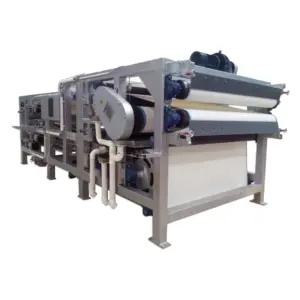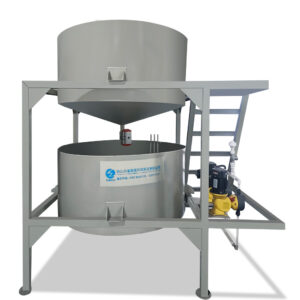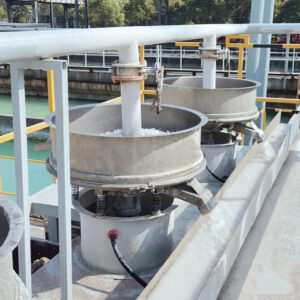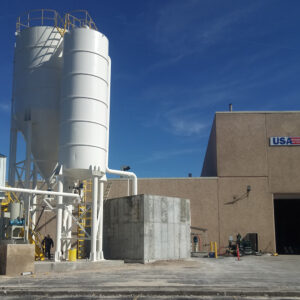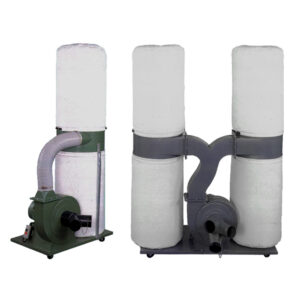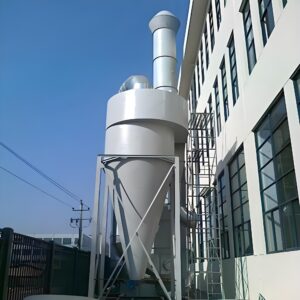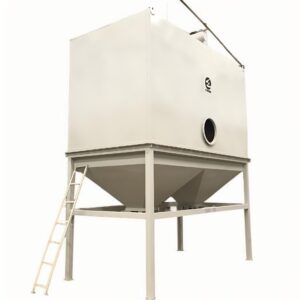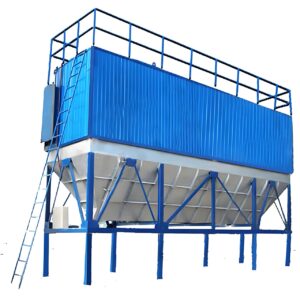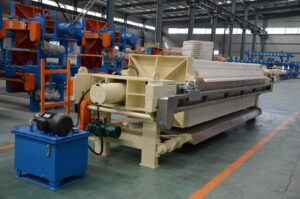Sustainable water management has become a critical global concern as we face increasing challenges related to water scarcity, pollution, and climate change. This article delves into inspiring case studies that showcase innovative approaches to managing our most precious resource. From cutting-edge technologies to community-driven initiatives, these examples demonstrate how sustainable water management can be achieved across various sectors and geographical locations.
As we explore these case studies, we'll uncover valuable insights into the strategies, technologies, and partnerships that are making a difference in water conservation, treatment, and distribution. These real-world examples not only highlight the progress being made but also serve as inspiration for future initiatives in sustainable water management.
The challenges we face in managing water resources are complex and multifaceted, requiring innovative solutions and collaborative efforts. By examining successful case studies, we can gain a deeper understanding of what works and why, paving the way for more widespread adoption of sustainable water management practices.
Sustainable water management case studies provide invaluable lessons and inspiration for addressing global water challenges, demonstrating that with innovation, collaboration, and commitment, we can achieve significant improvements in water conservation, quality, and accessibility.
Let's dive into some of the most compelling case studies that are shaping the future of sustainable water management.
How are cities revolutionizing urban water management?
Urban areas face unique challenges when it comes to water management, including aging infrastructure, population growth, and increased water demand. However, some cities are leading the way with innovative solutions that address these issues head-on.
One notable example is Singapore's NEWater initiative, which has transformed the city-state's approach to water security. By implementing advanced water reclamation technologies, Singapore has reduced its reliance on imported water and increased its self-sufficiency.
The NEWater system uses a multi-step purification process that includes microfiltration, reverse osmosis, and UV disinfection to produce high-quality reclaimed water. This water meets drinking water standards and is used for both industrial purposes and indirect potable use.
Singapore's NEWater initiative demonstrates that urban areas can achieve water security through innovative technologies and forward-thinking policies, serving as a model for other cities facing similar challenges.
| NEWater Facts | Data |
|---|---|
| Percentage of Singapore's water needs met by NEWater | 40% |
| Number of NEWater plants | 5 |
| Year NEWater was introduced | 2003 |
Another inspiring urban water management case study comes from PORVOO, a company that has developed cutting-edge wastewater treatment systems. Their vertical sedimentation tower for wastewater recycling has been implemented in several cities, significantly improving water quality and reducing the environmental impact of urban wastewater.
These urban case studies highlight the potential for cities to transform their water management practices, creating more sustainable and resilient water systems for the future.
What role does agriculture play in sustainable water management?
Agriculture is one of the largest consumers of freshwater globally, making it a critical sector for sustainable water management efforts. Innovative case studies in this field demonstrate how farmers and agricultural companies are adopting water-efficient practices and technologies to reduce their water footprint while maintaining or even increasing productivity.
One exemplary case study comes from California's Central Valley, where drip irrigation systems have been widely adopted. This precision irrigation method delivers water directly to plant roots, significantly reducing water waste compared to traditional flood irrigation techniques.
A study conducted by the University of California, Davis, found that drip irrigation can reduce water use by up to 30-40% while improving crop yields. This case demonstrates the potential for technology to revolutionize agricultural water use.
The widespread adoption of drip irrigation in California's Central Valley showcases how precision agriculture techniques can dramatically reduce water consumption while maintaining or improving agricultural productivity.
| Drip Irrigation Benefits | Data |
|---|---|
| Water savings | 30-40% |
| Crop yield improvement | Up to 25% |
| Energy savings | 30-50% |
Another notable case study in agricultural water management comes from Israel, a country known for its innovative approaches to water scarcity. The country has implemented a nationwide water recycling program, where treated wastewater is used for irrigation in agriculture. Today, over 85% of Israel's wastewater is recycled and reused in agriculture, making it a global leader in this practice.
These agricultural case studies demonstrate that with the right technologies and policies, the agricultural sector can significantly contribute to sustainable water management goals while ensuring food security.
How are industries innovating to reduce water consumption?
Industrial water use accounts for a significant portion of global water consumption, making it a crucial area for sustainable water management initiatives. Several industries are leading the way with innovative approaches to reduce their water footprint and improve water efficiency.
One inspiring case study comes from the textile industry, which is notorious for its high water consumption and pollution. The " Sustainable water management case studies " from PORVOO highlight how some textile manufacturers are implementing closed-loop water systems that recycle and reuse water within the production process.
For example, a denim manufacturer in Turkey implemented a closed-loop water recycling system that reduced their freshwater consumption by 90% and eliminated wastewater discharge entirely. This case study demonstrates the potential for significant water savings in water-intensive industries.
Industrial closed-loop water systems, as demonstrated in the textile industry, can achieve dramatic reductions in water consumption and wastewater discharge, setting a new standard for sustainable water management in manufacturing.
| Closed-Loop System Benefits | Data |
|---|---|
| Freshwater consumption reduction | 90% |
| Wastewater discharge reduction | 100% |
| Annual water savings | 1.6 million liters |
Another notable case study comes from the beverage industry. Coca-Cola has implemented a comprehensive water stewardship program across its global operations. The company has set ambitious targets to reduce its water use ratio and replenish the water used in its beverages back to communities and nature.
These industrial case studies showcase how businesses can take a proactive approach to water management, not only reducing their environmental impact but also improving their operational efficiency and resilience to water-related risks.
What can we learn from community-based water management initiatives?
Community-based approaches to water management have proven to be highly effective in addressing local water challenges, particularly in rural and developing areas. These grassroots initiatives often combine traditional knowledge with modern technologies to create sustainable solutions tailored to local needs.
One inspiring case study comes from the state of Rajasthan in India, where a community-led water harvesting movement has transformed the region's water landscape. The initiative, known as "Johad," involves the construction of small earthen dams to capture rainwater and recharge groundwater aquifers.
Led by local NGOs and community members, this movement has resulted in the construction of thousands of johads across the region. The impact has been significant, with groundwater levels rising, dried-up wells being revived, and agricultural productivity increasing.
The Johad movement in Rajasthan demonstrates the power of community-driven initiatives in sustainable water management, showing how local knowledge and collective action can lead to transformative change in water-scarce regions.
| Johad Impact in Rajasthan | Data |
|---|---|
| Number of johads constructed | Over 8,600 |
| Villages benefited | 1,000+ |
| Area brought under irrigation | 140,000 hectares |
Another notable community-based case study comes from Bolivia, where the city of Cochabamba faced severe water shortages and privatization issues. In response, local communities formed water committees to manage their own water supply systems. These committees, known as "OLPES" (Organizaciones Locales de Agua Potable y Saneamiento), have successfully provided water access to thousands of households through community-managed wells and distribution systems.
These community-based case studies highlight the importance of local participation and ownership in sustainable water management. They demonstrate that effective solutions often arise from the ground up, combining local knowledge with appropriate technologies and supportive policies.
How are ecosystems being restored through sustainable water management?
Ecosystem restoration is a crucial aspect of sustainable water management, as healthy ecosystems play a vital role in maintaining water quality, regulating water flow, and supporting biodiversity. Several case studies demonstrate how integrated approaches to water management can lead to significant ecosystem improvements.
One notable example is the restoration of the Loess Plateau in China. This massive landscape restoration project, initiated in the 1990s, aimed to address severe soil erosion and water scarcity issues in the region. Through a combination of reforestation, terracing, and sustainable agriculture practices, the project has transformed a degraded landscape into a thriving ecosystem.
The results have been remarkable, with increased vegetation cover, improved soil quality, and enhanced water retention. This has led to increased agricultural productivity and improved livelihoods for local communities.
The Loess Plateau restoration project in China demonstrates how large-scale ecosystem restoration efforts can significantly improve water management, soil health, and local livelihoods, providing a model for integrated landscape approaches to sustainable water management.
| Loess Plateau Restoration Results | Data |
|---|---|
| Area restored | 35,000 square kilometers |
| Increase in forest cover | 25% |
| Reduction in sediment flow to Yellow River | 100 million tons annually |
Another inspiring case study comes from the restoration of the Aral Sea basin in Central Asia. Once one of the world's largest inland water bodies, the Aral Sea had shrunk dramatically due to unsustainable water management practices. However, recent efforts to restore part of the sea have shown promising results.
The North Aral Sea project, implemented by Kazakhstan with support from the World Bank, involved the construction of a dam to separate the northern and southern parts of the sea. This, combined with improved irrigation practices in the basin, has led to a significant increase in water levels and the return of fish species to the northern part of the sea.
These ecosystem restoration case studies highlight the importance of taking a holistic approach to water management that considers the entire watershed and the interconnectedness of water, land, and ecosystems.
What role does technology play in advancing sustainable water management?
Technology is playing an increasingly crucial role in sustainable water management, enabling more efficient, precise, and data-driven approaches to water conservation, treatment, and distribution. Several case studies demonstrate how cutting-edge technologies are revolutionizing water management practices across various sectors.
One innovative example comes from Israel, where the company Watergen has developed technology that can produce drinking water from air humidity. This technology has been deployed in various water-scarce regions, providing a sustainable source of clean water without relying on traditional water infrastructure.
The Watergen system uses a patented heat exchange technology to extract water from the air, filter it, and mineralize it to produce high-quality drinking water. This technology has the potential to address water scarcity issues in remote areas or during emergency situations.
Watergen's atmospheric water generation technology demonstrates how innovative solutions can create new sources of clean water, potentially transforming water access in water-scarce regions and emergency situations.
| Watergen Technology Specifications | Data |
|---|---|
| Water production capacity (large unit) | Up to 6,000 liters per day |
| Energy efficiency | 350 Wh/liter |
| Minimum air humidity required | 20% |
Another compelling case study in water technology comes from Singapore, where the national water agency PUB has implemented a comprehensive Smart Water Grid system. This system uses sensors, real-time monitoring, and data analytics to optimize water distribution, detect leaks, and improve overall water management efficiency.
The Smart Water Grid includes technologies such as automated meter reading, pressure and water quality sensors, and predictive maintenance systems. This integrated approach has allowed Singapore to reduce water losses, improve water quality monitoring, and enhance the overall resilience of its water supply system.
These technology-driven case studies highlight the potential for innovation to address complex water management challenges. From creating new water sources to optimizing existing systems, technology is proving to be a key enabler of sustainable water management practices.
How are public-private partnerships advancing sustainable water management?
Public-private partnerships (PPPs) have emerged as a powerful mechanism for advancing sustainable water management, combining the resources and expertise of government agencies with the innovation and efficiency of the private sector. Several case studies demonstrate how these partnerships can lead to significant improvements in water infrastructure, service delivery, and overall water management.
One notable example comes from Manila, Philippines, where two private companies were granted concessions to manage the city's water supply and sewerage systems. This partnership, initiated in 1997, has led to substantial improvements in water access and quality for millions of residents.
Prior to the PPP, only 58% of the population had access to piped water, and water losses due to leaks and theft were as high as 63%. Through significant investments in infrastructure and improved management practices, the private operators have expanded water access to over 90% of the population and reduced water losses to below 15%.
The Manila Water PPP demonstrates how well-structured partnerships between public and private entities can lead to dramatic improvements in water access, quality, and efficiency, benefiting millions of urban residents.
| Manila Water PPP Results | Data |
|---|---|
| Population with water access | Increased from 58% to 90%+ |
| Non-revenue water | Reduced from 63% to below 15% |
| Water availability | Increased from 16 to 24 hours per day |
Another inspiring PPP case study comes from Morocco, where a national program for rural water supply and sanitation has successfully leveraged private sector participation to expand water access in rural areas. The program, known as PAGER, has used a combination of public funding and private sector implementation to bring piped water to thousands of rural communities.
These PPP case studies highlight the potential for collaborative approaches to address complex water management challenges. By combining public sector oversight with private sector efficiency and innovation, these partnerships can accelerate progress towards sustainable water management goals.
Conclusion
The case studies explored in this article demonstrate the diverse and innovative approaches being taken to address global water challenges. From urban water recycling initiatives to community-led water harvesting projects, these examples showcase the power of innovation, collaboration, and commitment in achieving sustainable water management.
Key takeaways from these case studies include:
- The importance of tailoring solutions to local contexts and needs
- The potential for technology to revolutionize water management practices
- The crucial role of community engagement and ownership in sustainable water initiatives
- The power of integrated approaches that consider the entire water cycle and ecosystem
- The value of public-private partnerships in accelerating progress and leveraging resources
As we face increasing pressures on our water resources due to population growth, urbanization, and climate change, these case studies provide valuable lessons and inspiration. They show that with the right combination of innovation, policy support, and stakeholder engagement, significant improvements in water conservation, quality, and accessibility can be achieved.
The path to sustainable water management is complex and challenging, but these case studies demonstrate that solutions are within reach. By learning from these successes and adapting them to new contexts, we can work towards a future where clean, sustainable water is available for all.
External Resources
- Case Studies in Water Sustainability – ADEC ESG – This resource provides case studies on companies like Coca-Cola and Innocent Drinks, highlighting their efforts and achievements in water conservation, including the use of technology to reduce water consumption.
- Water Conservation and Wastewater Case Studies – Mass.gov – This page features several case studies from Massachusetts companies that have implemented successful water conservation and wastewater management projects, resulting in significant reductions in water usage and wastewater discharge.
- Case studies – 2030 Water Resources Group – This site offers comprehensive case studies on water management strategies implemented globally, including public-private partnerships and projects focused on groundwater management and irrigation modernization.
- Cases in Water Conservation – EPA – This document from the EPA includes case studies of various water systems in the United States, detailing their water conservation programs, approaches, and the environmental and financial benefits achieved.
- Water Management Case Studies – Arup – Although the direct link is to the 2030 Water Resources Group, the case studies were developed by Arup and cover a range of water management strategies and their impacts.

